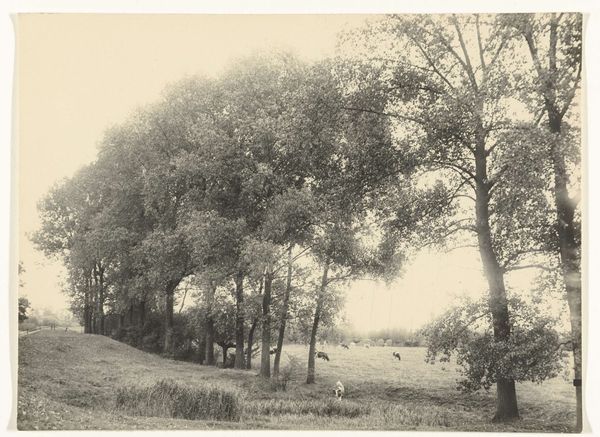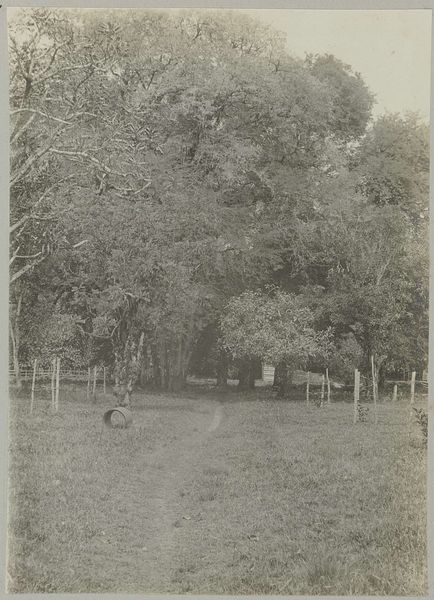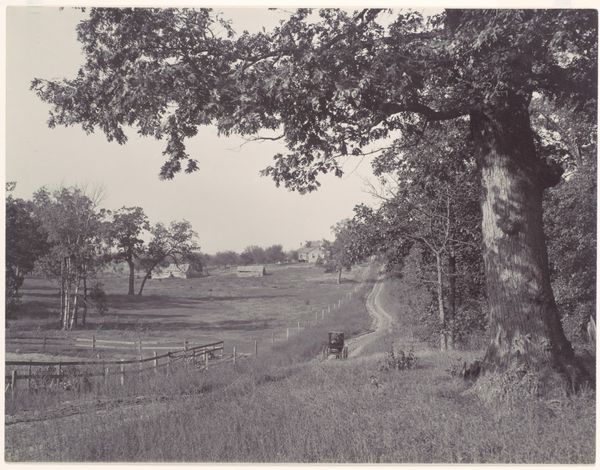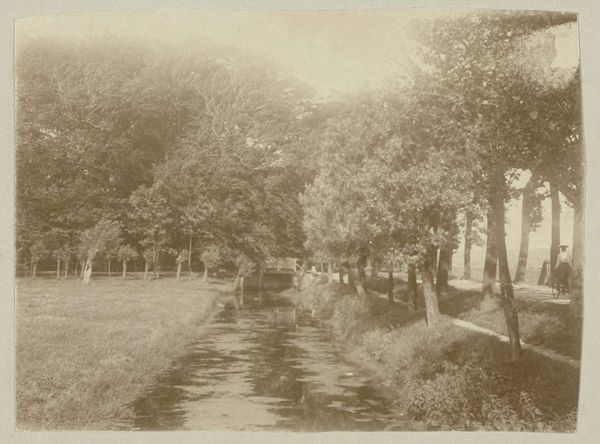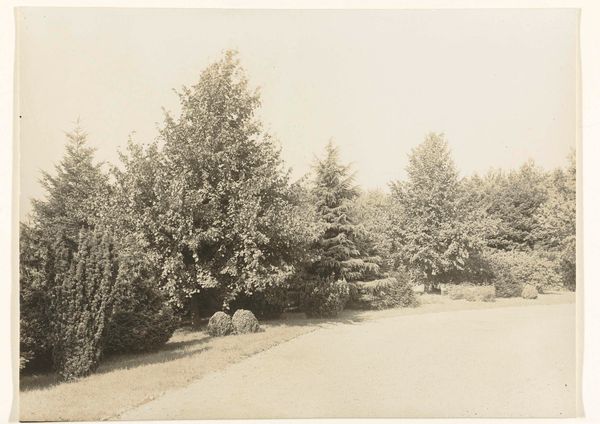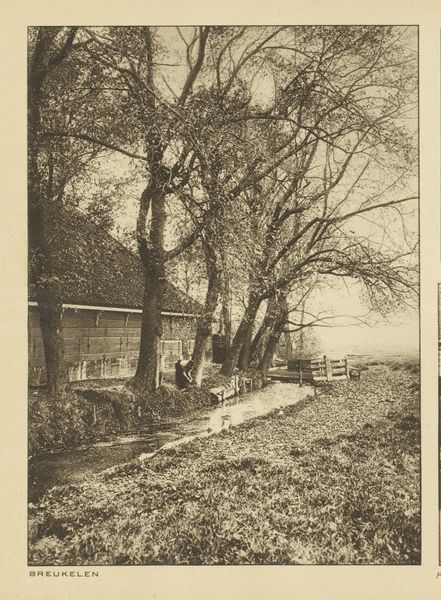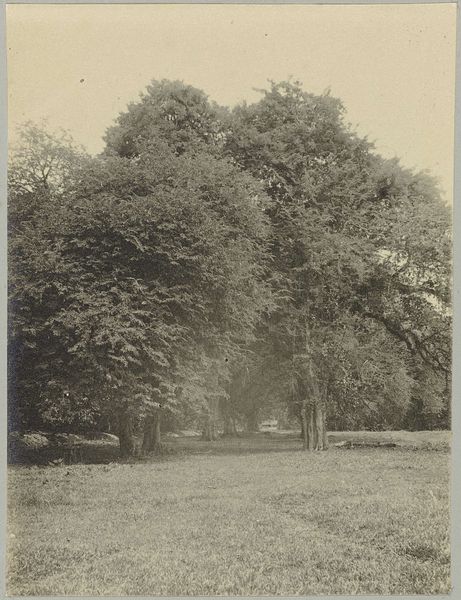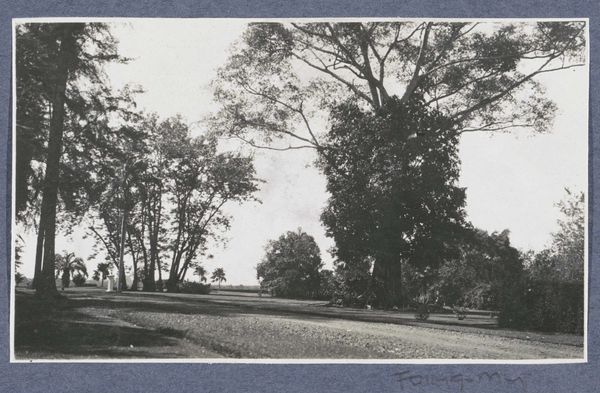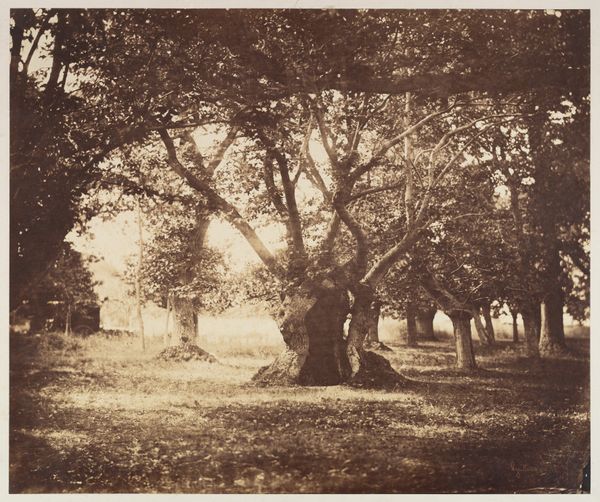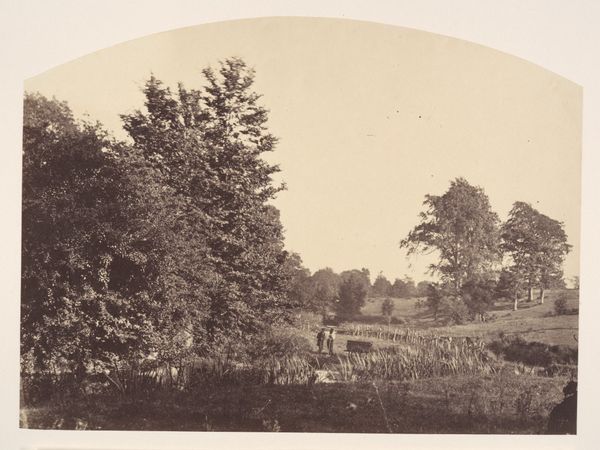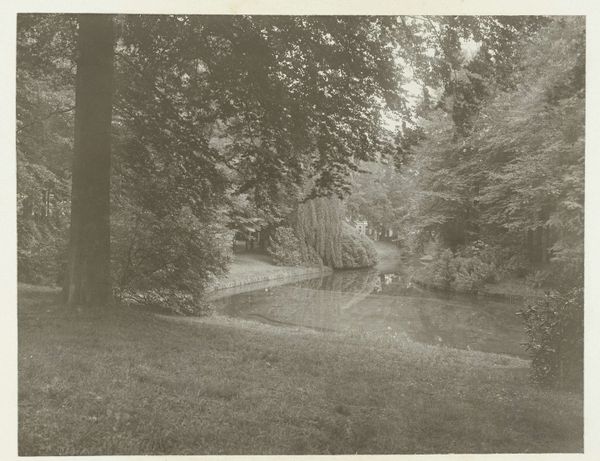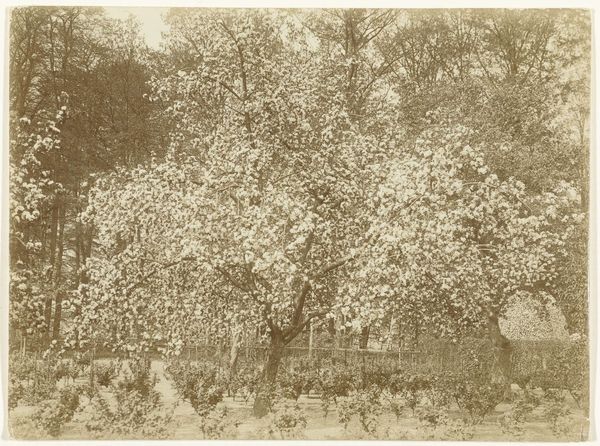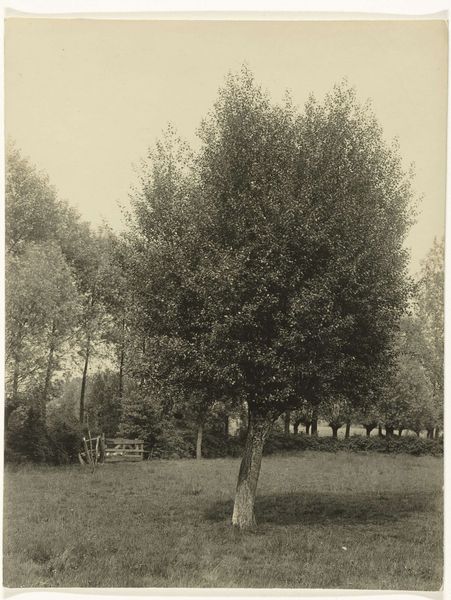
photography
#
pictorialism
#
landscape
#
photography
#
monochrome
Dimensions: height 168 mm, width 223 mm
Copyright: Rijks Museum: Open Domain
Curator: Looking at Richard Tepe's photographic work, particularly this piece titled "Knotwilgen," created sometime between 1900 and 1930, what immediately strikes you? Editor: There's a certain quietness about it, isn't there? The monochrome palette lends it a timeless quality, almost melancholic. It reminds me of a memory fading at the edges. Curator: That feeling isn’t accidental. Tepe was working during the rise of Pictorialism. He wasn't just documenting a scene; he was actively trying to create an art object. The soft focus and tonal range enhance the image’s artistic quality, deliberately moving it away from the objective realism associated with straightforward photography. Editor: Absolutely. And considering this piece is currently housed in the Rijksmuseum, how do we frame it within a contemporary context? It speaks volumes about landscape and identity, don’t you think? Particularly if we examine the social construction of the "Dutch landscape." Was this idyllic representation accessible for everyone during that time, or did it serve certain class interests? Curator: That's an essential question. The Dutch landscape tradition, especially as captured by Pictorialists like Tepe, romanticized rural life. But this romanticized view often obscured the realities of rural poverty, of land ownership, of who could actually enjoy this scenery, or, to take it further, who worked it. Art has long played this role, presenting specific points of view to shape the thinking of an era. Editor: Which makes examining these historical narratives so vital. I find myself looking beyond the tranquil surface, thinking about labor, access, and who exactly benefits from such serene representations. Curator: These photographs become less about what's visibly present and more about what is left unsaid, those unseen hands shaping this manufactured serenity. Editor: And with the landscape being such a charged concept today, grappling with climate change and resource extraction, Tepe's "Knotwilgen" invites us to reflect on our relationship with the environment and the layers of historical and social meaning we project onto it. It’s about acknowledging that landscapes aren’t just pretty pictures; they're also battlegrounds of power, ideology, and memory. Curator: By reframing this piece we reveal complex histories beneath an attractive veneer. Editor: Exactly! That’s how art can really teach us, isn’t it?
Comments
No comments
Be the first to comment and join the conversation on the ultimate creative platform.
